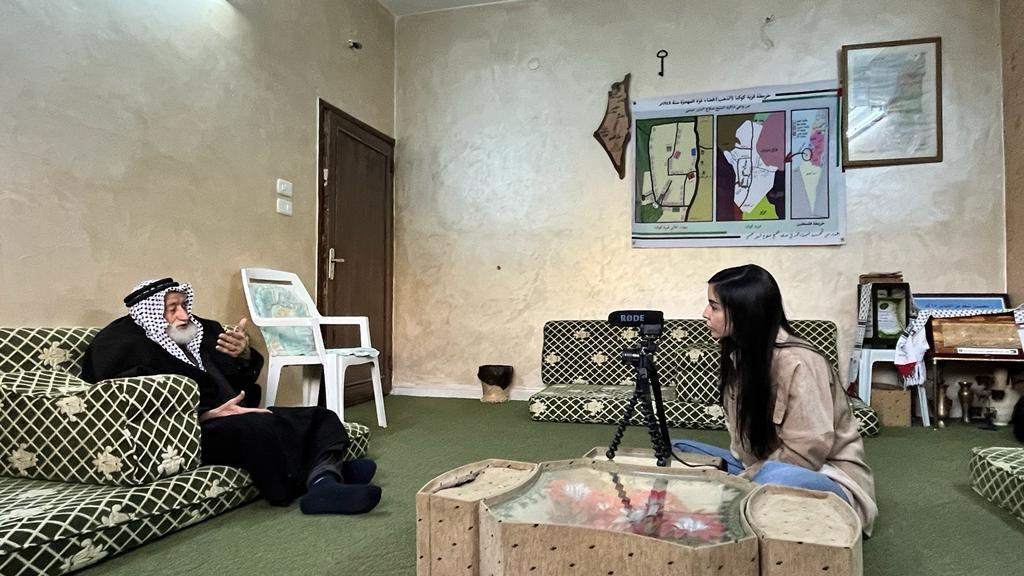Published
Mon, May 15, 2023, 08:00
- The DJ and producer has been interviewing the last surviving elders to mark the 75th anniversary of the Nakba, AKA the Palestinian Catastrophe.

Palestinian artist Nour has been filming interviews with the last surviving witnesses of the Nakba, the forced displacement of 750,000 Palestinians in 1948.
Today, May 15th, marks the 75th anniversary of the Palestinian Catastrophe, which led to the creation of the state of Israel. To commemorate the exodus, one of Nour's interviews is being shown on Al Jazeera's social media channel, AJ+.
Nour's work is also being displayed at today's Joint Nakba Ceremony in Jerusalem, held in collaboration with Palestinian-Israeli activist crew Combatants for Peace. There will be photos accompanied by audio of the elders telling their stories.
According to Nour, the subjects in her interviews are "the last remaining generation who witnessed Nakba–after them, there will be no one left to tell us first hand what happened."
She added: "80 percent of the time I would walk out the interview crying, or they would start crying. And then I'd feel guilty because I'd made these poor elders open up these wounds. But then I just kept telling myself, this has to be done."
Nour is now in the process of building a website for her archive of English-translated testimonials. "It means a Palestinian kid can go online in 20 years and hear them," she said. "It's important we have these resources available for future generations."
Snippets of these interviews can be seen on Nour's Instagram page. "Most of [the refugees] were farmers–very simple people living on their land, celebrating their children's weddings," she said. "And overnight, their lives were uprooted–they lost everything. The fact this was allowed to happen by the US, UK, France and Germany is just insane."
One elder from the former town of Al-Dawayima told Nour that he saw "Zionist forces committing massacres" on people praying in mosques. "He told me they killed over 40 people as they were praying," Nour said. "This was one of many stories."
Nour's aim is to produce a documentary series with the videos, honing in on the memories of the elders as well as the experiences of younger generations in refugee camps today.
These camps were built as shelters by the UN after Palestinians were expelled from their homes in 1948. More than 400 Palestinian villages were destroyed. But with no right to self-determination, many had to stay in these camps. Today there are 58 recognised refugee camps in Gaza, the West Bank, Jordan, Syria and Lebanon.
Nour volunteers in the camps, working on art projects with children and young people. In July, her non profit, Beyond Us, will host a creative summer camp at Jerash in Jordan. Also, next month, in collaboration with Future Female Sounds, she's hosting a DJ workshop for women and gender minorities in Palestine.
"There's a lack of safe spaces and resources for creativity–but I'm a strong believer in the fact that art heals," she said.
In the meantime, Nour is looking for a platform to help produce and broadcast her interviews with the Palestinian elders, and to document the life of the younger generations in the camps. "We've had a good start with Al Jazeera," she said. "I welcome more cameras, creators and story tellers to help me share this story."
Watch clips of the interviews.